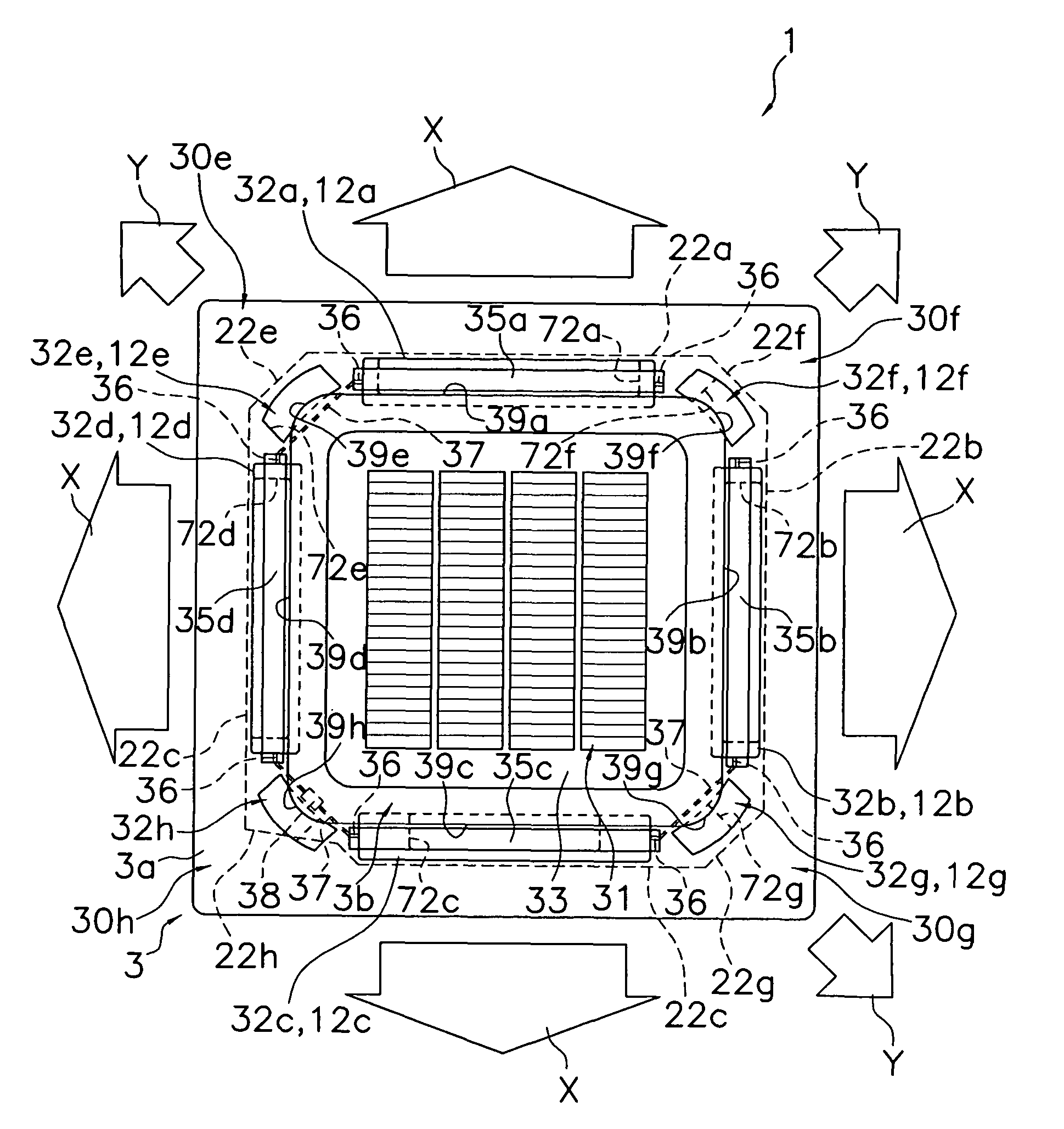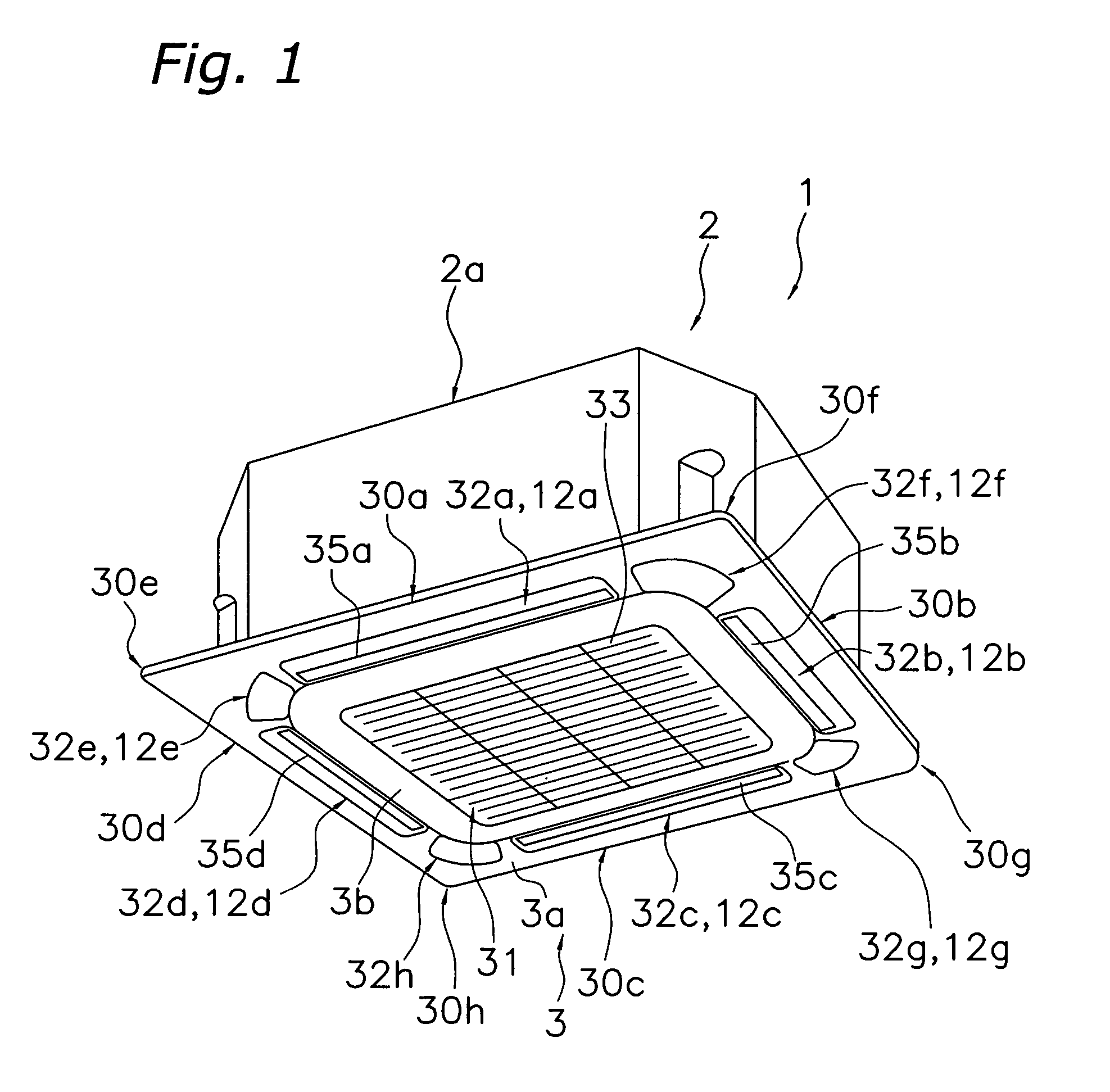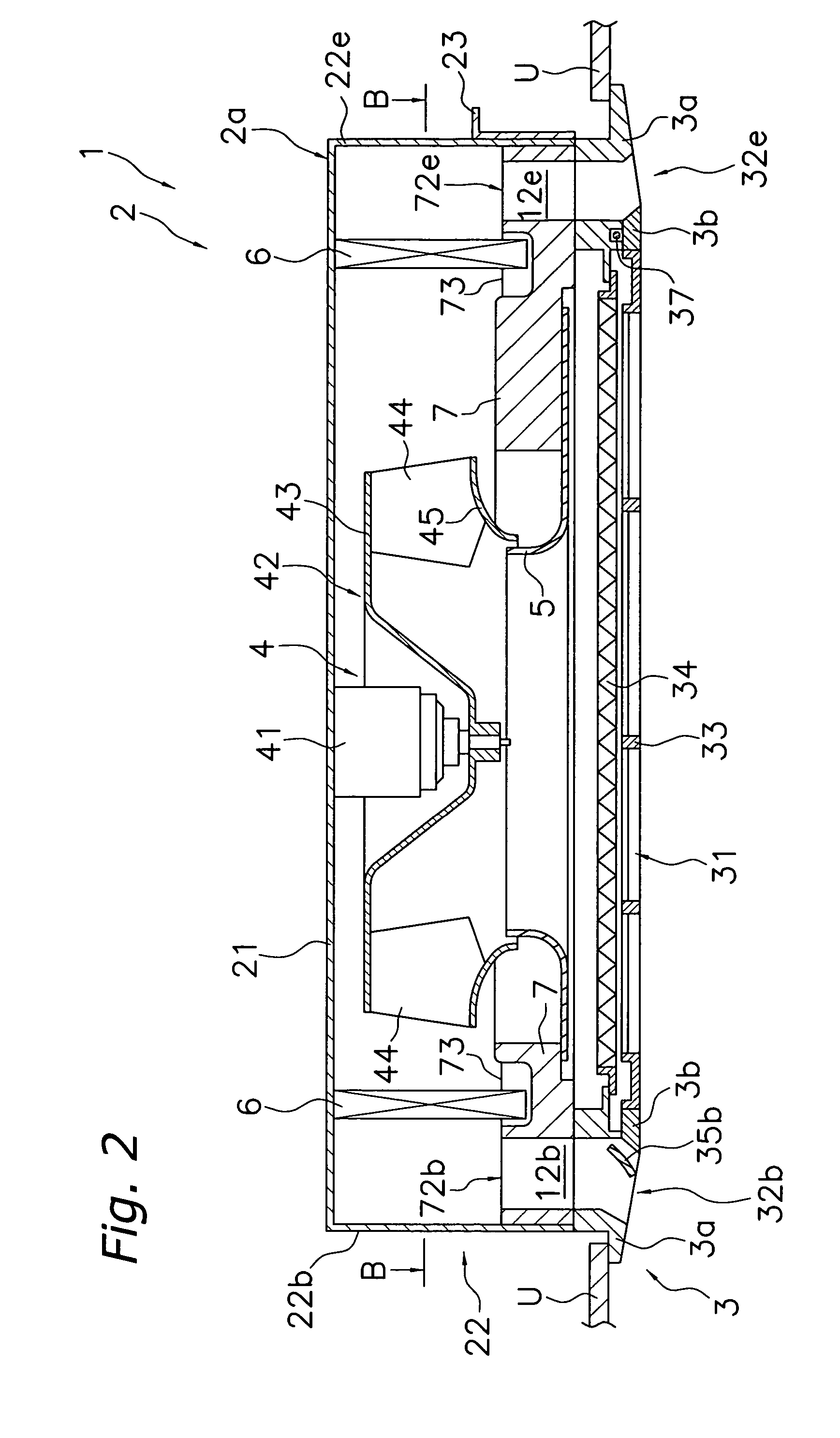Air conditioner
a technology for air conditioners and fans, applied in the field of air conditioners, can solve the problems of increasing the flow speed of air currents blown out of outlets, increasing drafts, etc., and achieve the effect of reducing short circuits and increasing drafts
- Summary
- Abstract
- Description
- Claims
- Application Information
AI Technical Summary
Benefits of technology
Problems solved by technology
Method used
Image
Examples
Embodiment Construction
[0030]The following explains the embodiments of an air conditioner according to the present invention, referencing the drawings.
(1) Basic Constitution of the Air Conditioner
[0031]FIG. 1 is an external perspective view of an air conditioner 1 according to one embodiment of the present invention (ceiling is not shown). The air conditioner 1 is a ceiling embedded type air conditioner, and comprises a casing 2 that internally houses various constituent equipment. The casing 2 comprises a casing main body 2a, and a face panel 3 disposed on the lower side of the casing main body 2a. As shown in FIG. 2, the casing main body 2a is disposed inserted into an opening formed in a ceiling U of the air conditioned room. Furthermore, the face panel 3 is disposed so that it is fitted into the opening of the ceiling U. Here, FIG. 2 is a schematic side cross sectional view of the air conditioner 1, and is a cross sectional view taken along the A-O-A line in FIG. 3.
[0032]As shown in FIG. 2 and FIG. 3,...
PUM
 Login to View More
Login to View More Abstract
Description
Claims
Application Information
 Login to View More
Login to View More - R&D
- Intellectual Property
- Life Sciences
- Materials
- Tech Scout
- Unparalleled Data Quality
- Higher Quality Content
- 60% Fewer Hallucinations
Browse by: Latest US Patents, China's latest patents, Technical Efficacy Thesaurus, Application Domain, Technology Topic, Popular Technical Reports.
© 2025 PatSnap. All rights reserved.Legal|Privacy policy|Modern Slavery Act Transparency Statement|Sitemap|About US| Contact US: help@patsnap.com



